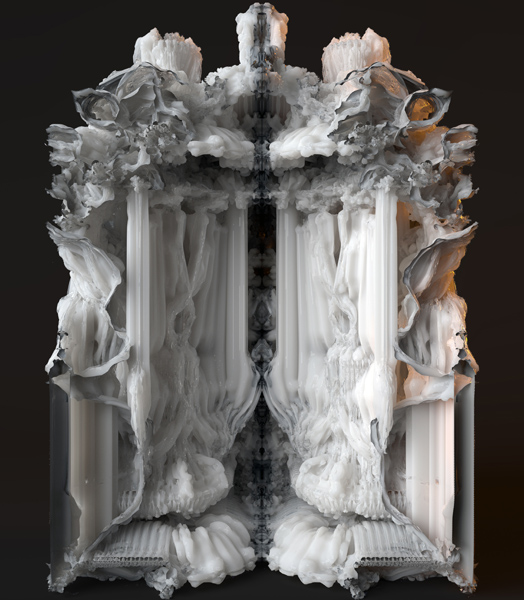By Namita Nathani
Photography: Michael
Hansmeyer & Benjamin Dillenburger; courtesy
the architects
.jpg) |
| . |
What would
architecture be if we could free ourselves from preconceptions? How would
unseen forms materialize? Would the answer be surprising? Intriguing and
delighting?
Analysing
morphogenesis (process cell division) in architecture and using the art of additive
manufacturing, Zurich-based architect and programmer, Michael
Hansmeyer explores
the use of customised algorithms and computation (without any manual intervention) to generate a mind-boggling variety of forms, assimilated
into a life-size architectural installation.
 |
| . |
Michael uses origami
to create 3-dimensional structures integrating technology in the process of
doing so, as it empowers the possibility of folding everything and anything at
a much faster pace with a result of hundred thousand variations, creating something
that is completely state-of-the art – a “Digital Grotesque”.
.jpg) |
| . |
.jpg) |
| . |
Developing an
algorithm that iteratively divides and transforms the initial geometry of a
simple cube, despite simple rules, into a complex world of forms at multiple
scales: between ornament and structure, between order and chaos, foreign and
yet familiar.
.jpg) |
| . |
.jpg) |
| . |
The grotto has
information at many scales, the closer one gets, the more new features one
discovers. Some surface details are almost at the threshold of human visibility.
Employing computational architecture, information such as planarity, radiality
and curvatures, which is already present in the structure, is brought to the
fore.
 |
| . |
The architect becomes
the orchestrator of processes like permutations, generations, crossing and
breeding to create a design that identifies the property of the surface and how
that surface is folded; as the forms that are created are un-drawable by the
human hand. An architect, who would draw the form with pen and paper would
probably take months or even a year to draw all the sections - the elevations.
.jpg) |
| . |
Using the room-sized
grotto with subdivision and mesh grammars, as an introduction of Mannerist style, Michael explores a new capability of digital design that employs a
reduced, minimalist approach that nonetheless transcends rationality.

No comments :
Post a Comment